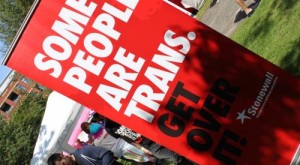International Transgender Day of Visibility is an annual holiday occurring on March 31 dedicated to celebrating transgender people and raising awareness of discrimination faced by transgender people worldwide. Trans Day of Visibility is an important time to amplify voices across the diverse trans community.
The theme this year is trans resistance, the aim is to fight against prejudice.
But it’s also about education and understanding transgender issues.
Here are some terms explained:
- Transgender – An umbrella term that includes all people who have genders not traditionally associated with their assigned sex.
- Bigender – Someone who identifies as both a man and a woman.
- Androgynous – Someone who neither identifies with, nor presents as, a man or woman.
- Gender Questioning – Someone who may be questioning their gender or gender identity.
- Non-binary – This is a way of describing one’s gender as outside the two-gender system (i.e. man/woman) and/or challenging that system.
- Transition – The time when a person begins to live as the gender with which they identify rather than the gender they were assigned at birth, which often includes changing one’s first name and dressing and grooming differently.
- Gender Dysphoria – A condition where a person experiences discomfort or distress because there is a mismatch between their biological sex, gender identity and/or internal sense of sex.
Click here for more details on transgender support groups across the UK.

